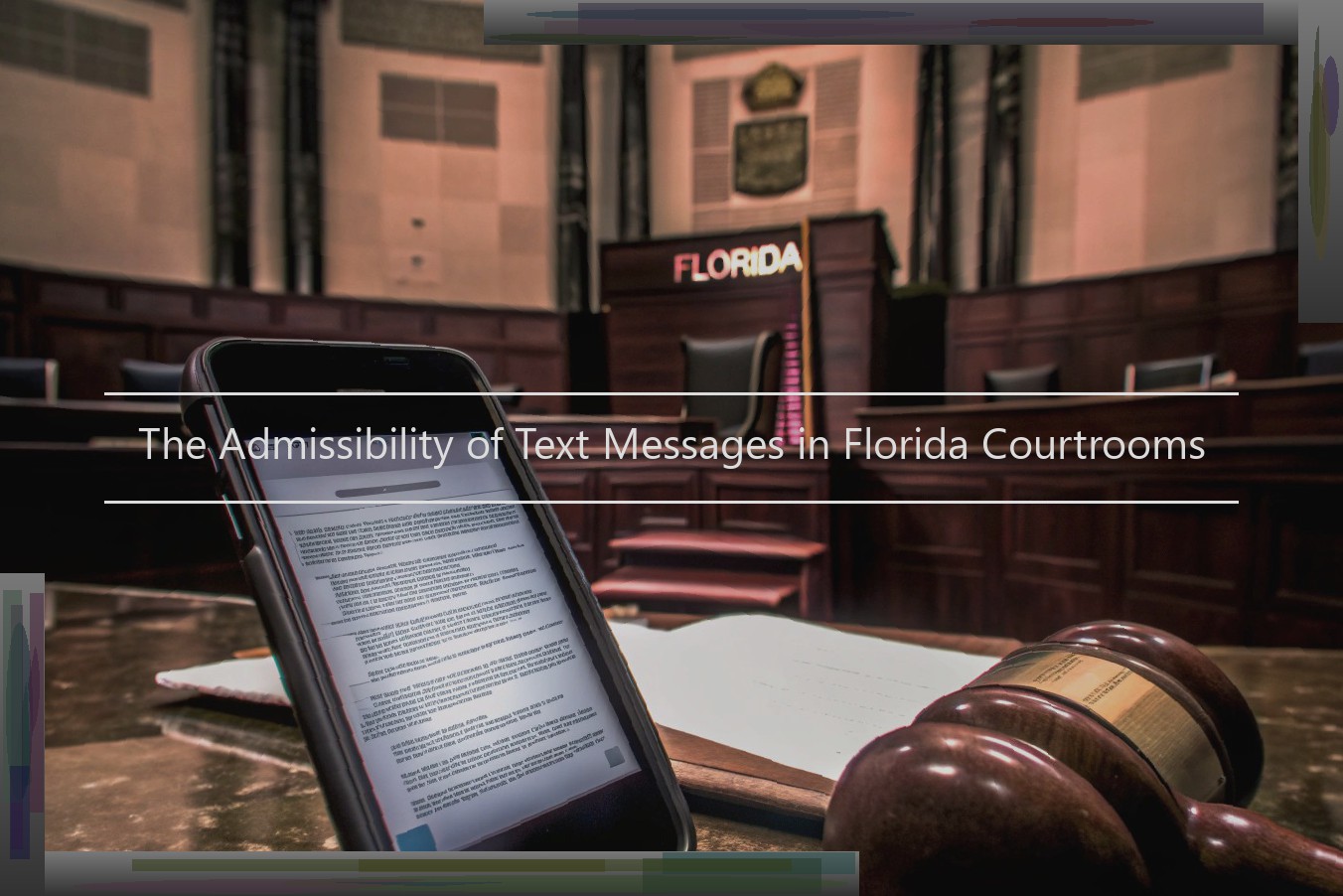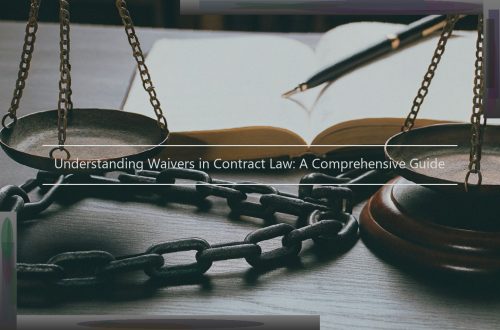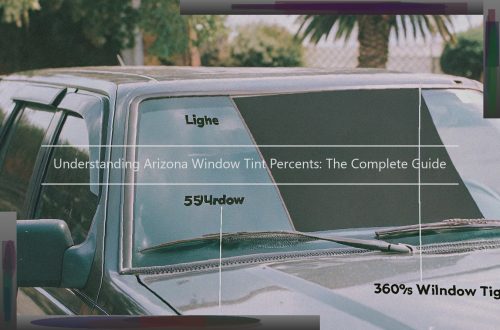The Admissibility of Text Messages in Florida Courtrooms
Introduction to Text Message Evidence
The use of text messages as evidence in Florida courts is on the increase. Because it is common for people to communicate mostly by using text messaging and most people have "smart phones" with imbedded cameras, text message communications often include photographs and pictures as well as text. Florida courts are consistently hearing disputes which focus on text messages, including issues related to:
Text messages are often utilized in domestic litigation to show context and credibility, and for personal injury cases to demonstrate activities on a particular date and/or location, and business cases use text messages as a means of proving contracts via written proposals or offers. For those who are less familiar with the rules of evidence, text messages are treated by Florida courts similarly to written documents or paper documents . The "Florida Electronic Discovery Rules" contain an extensive definition for a text message, e-mail and other similar electronic communications as "[a] writing or other data which is stored in an electronic medium produced by an electronic device which is retrievable in perceivable form and which can be reviewed and/or printed in a manner usable by the person reviewing or printing it." A text message is considered a "writing" for purposes of the Florida Evidence Code. A "writing" can be presented to the court in a variety of ways. The common manner is through a printed and scanned document. Alternatively, in certain instances a Judge may allow the testimony of a person via live or via remote video who can speak to the issue as to the electronical communication and its reliability. There is case law authority for the proposition that text messages and messages sent from a phone are presumed to be authentic if they are displayed on a person’s phone. This is so especially if the language and subject matter of the text or e-mail is consistent with the person’s writing style. Of course, in order to have the benefit of the presumption, one usually must establish how the text or e-mail came into existence.

Requirements for Admittance
Both at the administrative level and in the Article I Courts, the admissibility of evidence and the Florida Rules of Evidence essentially apply. Those provisions that govern other forms of evidence apply to text messaging as well.
However, that does not mean that all text messages are automatically admissible as evidence in Florida courts.
As with any type of evidence, judicial proceedings in Florida courts (both civil and criminal) must consider whether the text message should be part of the record.
Principally, courts will look at the following criteria to properly evaluate an electronic message for admissibility:
These criteria represent an effort to balance a party’s interest in having potentially highly prejudicial evidence, such as a text message or postcard, introduced with the recognized dangers of false or fabricated documents.
The challenge to an official behind-the-scenes message like a text message or a postcard is that the person who created the document may not be available to testify. Courts use the above criteria to decide whether to admit them.
Authentication of Text Messages
In order for text messages to be considered by a court as evidence, they must first pass the threshold of authentication. Simply put, this means that there must be reasonable and sufficient evidence that the text message in question is what it purports to be, and that its contents are reliable. According to Florida Statutes, a text message must be authenticated through testimony or other evidence. F.S. 90.901; Paguio v. Tulloch Holding, Inc., 10 So. 3d 683, 685 (Fla. 5th DCA 2009). A frequently used popular method of authenticating text messages is the "Reply Test" which asks whether the reply fits with any previous conversation and the knowledge of the individual involved. Verifies the person identified as the sender had access to the phone during the relevant period and the contact number is accurate.
However, a recent Fifth District ruling held that an affidavit of the owner of the phone that generated the texts provided sufficient evidence to authenticate the text messages in question. One of the reasons that the holding in this case is so significant is that the owner of the phone, a bank employee, attached his employment W-2 as proof he worked at the bank over the relevant period of time. W-2’s may not be enough to establish the reliability of a person sending a text message, as Florida law requires that the contact number be the same as the individuals cell phone or that the cell phone be registered to that individual for six or more months.
Relevance and Significance
Once a text message has been authenticated, it must be relevant and material to the case at hand. The party offering the evidence has the burden of proving that the text message is relevant to the claims being litigated. More specifically, Federal Rule of Evidence 401 defines relevant evidence as: "Relevant evidence" means evidence having any tendency to make the existence of any fact that is of consequence to the determination of the action more probable or less probable than it would be without the evidence. In Florida, the standard for admissible evidence is more clearly outlined in the Florida Rules of Evidence 90.401: "Relevant evidence" means evidence tending to prove or disprove a fact in issue which is consequential to the determination of the action. Florida courts including marital and family law proceedings apply the Federal Rules of Evidence to the admissibility of evidence. Under these rules, the invoked "fact in issue" must be established by the text messages. Simply because a text message may have some probative value, does not mean that it is relevant. In Lange v. Lange, Palm Beach County Family Division Judge Carolyn Kuntz ruled that there was absolutely no basis upon which a court could conclude that the proposed evidence would have any effect whatsoever in this case, but the Stepmother argues otherwise. The "evidence" that the Stepmother proposes to introduce is nothing more than a series of allegedly illicit text messages which, e.g., state that the Husband "must" do what the Stepmother wanted, and that he has "done something not very good," and that the Stepmother is "not happy" with him. The Stepmother states that the text messages are between her and the Husband; however, she has attempted to pass off a number of text messages which were purportedly purportedly between one of the children and the Husband as being between the Stepmother and the husband. If the text messages are admitted, it will be directly contrary to the truth of the matter asserted therein. Furthermore, this does not prove that he was meeting his ex-wife’s (the mother) demands and/or coercion, or that it affected his visitation with the children; therefore, it is not relevant.
Hearsay Exception
Certain exceptions under Florida law may allow for a text message to be considered admissible evidence in court over and above the hearsay rule. A statement may fall under an exception to the hearsay rule if it is a present sense impression.
Hearsay is defined under Florida Statute 90.802 as "a statement, other than one made by the declarant while testifying at the trial or hearing, offered to prove the truth of the matter asserted." While text messages and other electronic data may be admissible, they generally are considered hearsay.
A present sense impression is a statement describing an event or condition that was made immediately after that event or condition. Pursuant to Florida Statute 90.803(1) , to qualify as a present sense impression the statement must:
A present sense impression may also be a description of what the witness perceives when he or she observes an event with their own eyes, such as the reaction of a party in the moments before a crash. Present sense impressions, pursuant to Florida law, may be admissible notwithstanding the hearsay rule.
These rules allow present sense impressions and statements made during the event to be admitted as part of the res gestae, otherwise known as ‘the things done,’ despite the possibility of confusion with the hearsay rule. For example, a text message involving directions on how to get somewhere would be considered a present sense impression revealing how to reach that destination.
Hurdles and Challenges
Even if the text messages you want to admit are relevant, authentic, original, and not hearsay, this doesn’t mean they will necessarily be admitted into evidence. Other rules of evidence may restrict admissibility and judges will conduct a preliminary examination of all evidence to ensure its admission is appropriate. Plus, opposing counsel will very likely object to the admission of the text messages. Some common objections we frequently come across in Florida courts include:
With specific regard to the above objection, it’s important to note that a party need not demonstrate a complete identity of phrasing between phone calls and text messages for the testimony to be admissible. In other words, just because a party talked to someone for a long period of time, but never actually said the exact same things in a text, doesn’t mean the opposing party won’t try to object. Most likely, your counsel will argue that the gist of the call is the same as the text messages. Each of the above objections to the admissibility of text messages can be overcome with deft planning and attention to detail in the steps leading up to the need for the texts in evidence or fit into whatever other manner they may be germane.
Case Examples
Cases in Florida courts have shown the significance of how text messages can materially impact outcomes. For example: In 2011, a Spanish language radio station employee entered the office minutes before quitting to send a "farewell" text to friends from a company phone. The employer texted back, allegedly firing her on the spot and removing her from the payroll. She filed for unemployment. Florida’s unemployment appeals court ruled in 2014 that the employer violated the anti-retaliation provisions of Fla. Stat. § 443.101(3) in the letter sending the employee a notice to stop using the phone during work hours. In 2015, the Florida 3rd District Court of Appeal ruled in its unpublished decision (Trenor v. Agency for Workforce Innovation Fla. Unemployment Appeals Comm’n), "Her Text Message did not constitute unwork-related misconduct because it was not a substantial disregard of the employer’s interests." Independent of any intent to fire the employee, the employer’s actions exposed it to damages via "the statutory provisions" of Chapter 443, which pertain to whistleblowers. Employees have also found themselves on the end of courts rejecting their dismissal requests based on their text messages. In Dish Network, LLC v. Ray Paxton, David Smith and Sean Santini, Dish Network terminated sales agents for violating company policy by sending obscene text messages. After reassessing the situation, the court overturned the lower court’s ruling that the employees should be reinstated, awarding Dish Network attorney fees and other expenses associated with its victory.
Helpful Practices
Given the ubiquitous nature of frequent text messaging, text messages are a common form of communication. Consequently, there is a growing prevalence of parties in litigation attempting to use text messages as evidence. In order to effectively do so, consider the following:
Consider hiring an expert in digital forensics to preserve text messages from the device itself. Preserving text messages through the carrier can result in less than satisfactory results. Specifically, often times, text messages are bundled together in monthly "batches." For example, if you texted your mother on December 1, 2018 and your friend Billy on December 15, 2018, there are two different text message "batches" that she received on these separate days. Preserving the text messages through the carrier could result in an output that only shows a small portion of the text messages received on December 1, 2018 or only a small portion of the text messages received December 15, 2018. Further, the output could display text messages in a disorganized manner, making important text messages difficult to locate. By preserving the text messages from the device itself, the text messages should be preserved in their native format in a more easily readable database.
Don’t log into Apple’s iMessage with any account that is not registered to you. Apple’s iMessage allows users to sign in and out of multiple iMessage accounts on the same device. If there are multiple iMessage accounts present on one device , an inadvertent login to another iMessage account could result in the unintended forwarding of text messages to the unintended recipient.
Do not delete text messages, image texts, voicemails or other downloads. We have all had instances where we have accidentally deleted a text message, image text, voicemail or other download from our phone and then wished that we had saved it for later. If you think that you may need to use text messages in court at some point in the future, consider considering holding onto text messages you have received. Recalling and re-opening deleted texts and voicemails can be extremely difficult and time consuming, oftentimes requiring the assistance of a digital forensics expert.
Create a backup of the text messages that you would like to use as evidence. Ideally, the backup should not overwrite existing backups of text messages. In this way, you can preserve the information and have no concern of deletion.
Save the text messages in PDF format. This storage format will render text messages in its native format, and will likely contain attached images, voice messages and other stored media from the text messaging thread.



